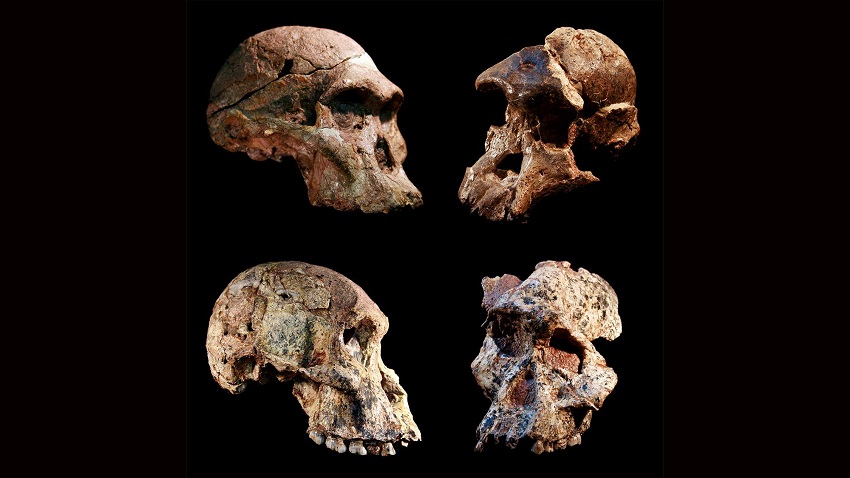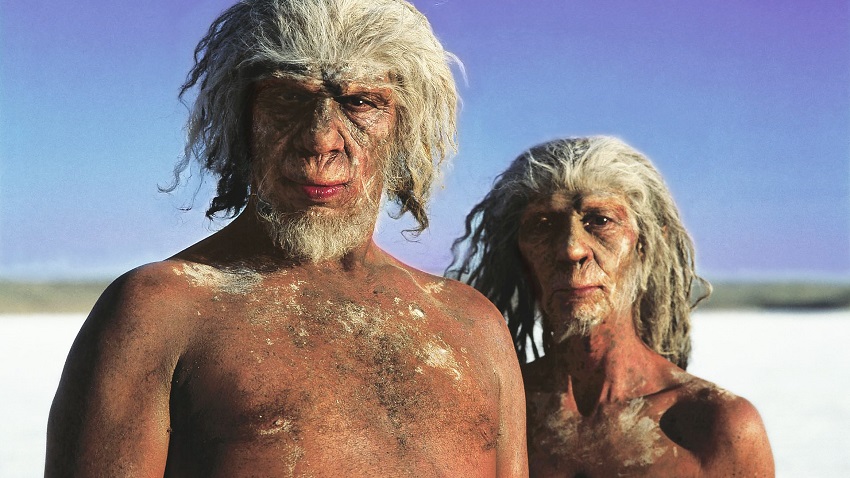Human evolution is the evolutionary process that led to the emergence of Homo sapiens as a distinct species within the hominid family, which includes all the great apes. In the history of primates, human evolution is a fascinating and lengthy process that traces the origins of Homo sapiens from apelike ancestors.
Scientific evidence supports the understanding that humans first evolved in Africa, with much of the evolution occurring on the continent. The stages of human evolution are characterized by various species such as Dryopithecus, Australopithecus, Homo Erectus, Homo Sapiens Neanderthalensis, and Homo Sapiens Sapiens.
Paleoanthropology, the scientific study of human evolution, seeks to investigate the origin and defining traits of our species. It involves understanding the similarities and differences between humans and other species in terms of genes, body form, physiology, and behavior. Humans are still evolving, albeit in different conditions compared to our ancestors. Evolution refers to the gradual change in the genetics of a population, and as long as successful reproduction continues, humans will continue to evolve. Let’s delve deeper into the fascinating journey of human evolution.
Is Human Evolution A Fact Or Theory? Exploring The Controversy
Human evolution is a topic that has sparked both controversy and intrigue. Some argue that it is a fact, backed by scientific evidence and fossil records, while others believe it to be a mere theory. Regardless of personal opinions, the evolutionary process within the history of primates has led to the emergence of Homo sapiens as a distinct species.
Throughout the stages of human evolution, including Dryopithecus, Ramapithecus, Australopithecus, Homo erectus, Homo sapiens neanderthalensis, and Homo sapiens sapiens, our ancestors have undergone numerous physical and cognitive changes. The study of human evolution, known as paleoanthropology, aims to understand the origin and defining traits of our species.
It involves analyzing similarities and differences in genes, body form, physiology, and behavior between humans and other species. Evolution is a gradual and ongoing process, suggesting that humans are still evolving and will continue to do so in the future.
Debunking Misconceptions: Is Human Evolution A Theory Or Fact?
Human evolution is not just a theory but a well-supported scientific fact. The process of human evolution spans millions of years and has led to the emergence of Homo sapiens as a distinct species within the hominid family. It is important to differentiate between the terms “theory” and “fact” in a scientific context.
In science, a theory is an explanation based on extensive evidence and experimentation, while a fact is a recognized observation that has been repeatedly confirmed. The overwhelming evidence from paleoanthropology, genetics, and other scientific disciplines supports the fact of human evolution.
Numerous fossil discoveries, DNA analysis, and comparative anatomy provide a clear picture of our evolutionary history. Understanding human evolution is crucial for comprehending the diversity and complexity of our species and offers valuable insights into our past, present, and future.
Human Evolution: Theory Or Fact – What Science Reveals
Human evolution is not just a theory, but a fact backed by scientific evidence. It is the process by which our species, Homo sapiens, emerged from the hominid family. The stages of human evolution can be traced back to creatures like Dryopithecus, considered to be ancestors of both humans and apes.
From there, we have seen the evolution of species like Ramapithecus, Australopithecus, Homo erectus, Homo neanderthalensis, and finally, Homo sapiens sapiens. This evolutionary timeline provides insight into our ancestors and how we have evolved over time. The study of human evolution, known as paleoanthropology, explores the origins and distinguishing traits of our species.
It involves understanding the similarities and differences between humans and other species in terms of genetics, physiology, and behavior. Humans are constantly evolving, experiencing gradual changes in our genetic makeup, ensuring our continued adaptability and survival.
Delving Into The Evidence: Is Human Evolution A Fact Or Theory?
Human Evolution is the gradual change in the genetics of a population over time, leading to the emergence of Homo sapiens as a distinct species. It is a fact supported by a wealth of evidence from various scientific disciplines. The stages of human evolution include Dryopithecus, Ramapithecus, Australopithecus, Homo Erectus, Homo Sapiens Neanderthalensis, and Homo Sapiens Sapiens.
Humans first evolved in Africa, and much of the evolutionary process has occurred on the continent. Paleoanthropology is the scientific study of human evolution, investigating the origin and defining traits of our species. This field delves into the similarities and differences between humans and other species in genes, body form, physiology, and behavior.
Evolution is an ongoing process, and humans are still evolving. As our environment and circumstances change, so too may the genetic makeup of our population.

From Apes To Humans: Separating Fact From Theory In Evolution
Human evolution is the gradual change in the genetics of a population over time. It is the evolutionary process within the history of primates that led to the emergence of Homo sapiens as a distinct species of the hominid family.
The stages of human evolution include Dryopithecus, which are deemed to be the ancestors of both man and apes, Ramapithecus, Australopithecus, Homo Erectus, Homo Sapiens Neanderthalensis, and Homo Sapiens Sapiens. Humans first evolved in Africa, and much of human evolution occurred on that continent.
Paleoanthropology is the scientific study of human evolution, investigating the origin of the universal and defining traits of our species. It involves studying the similarities and differences between humans and other species in their genes, body form, physiology, and behavior.
Evolution is an ongoing process, and humans will continue to evolve as long as we exist.

Frequently Asked Questions On Human Evolution
What Humans Evolved From?
Humans evolved from a process within the history of primates that led to Homo sapiens.
What Did Humans Look Like 100,000 Years Ago?
Humans 100,000 years ago looked like early Homo sapiens, with similarities to both apes and modern humans.
How Will Humans Look In 1,000 Years?
In 1,000 years, humans may undergo genetic changes and adaptations, but it is impossible to predict exact physical appearances.
Are Humans Still Evolving?
Yes, humans are still evolving as the genetics of the population gradually change over time. The conditions for evolution have changed, but evolution continues as long as reproduction is successful.
Conclusion
Human evolution is a fascinating subject that sheds light on the origins of our species, Homo sapiens. Through the evolutionary process, we have emerged as distinct beings within the hominid family. The stages of human evolution provide insights into our ancestral lineage, from Dryopithecus to Homo Sapiens Sapiens.
It is clear that humans first evolved in Africa, and much of our evolution occurred on that continent. The scientific study of human evolution, known as paleoanthropology, helps us understand the defining traits and similarities between humans and other species.
Interestingly, evolution is an ongoing process, and humans are still evolving as our genetics change over time. While the conditions for evolution may have altered, our ability to successfully reproduce ensures that the process continues. Understanding our evolutionary journey deepens our appreciation for our place in the natural world and the remarkable adaptability of our species.
